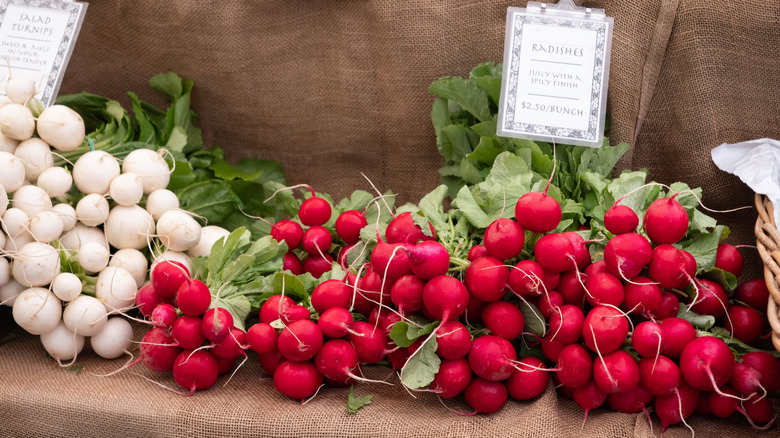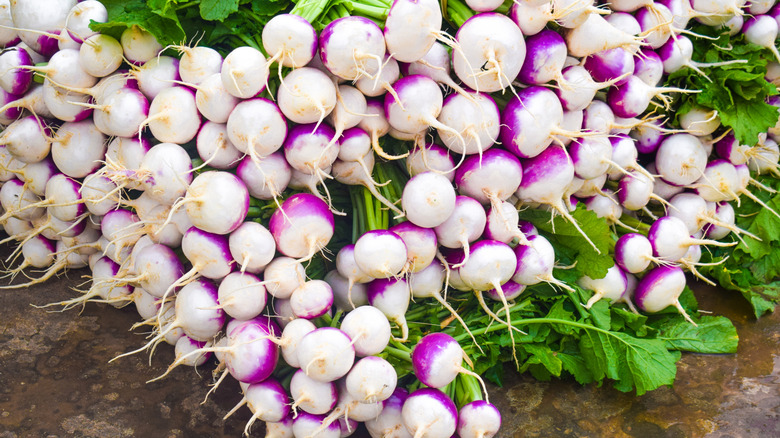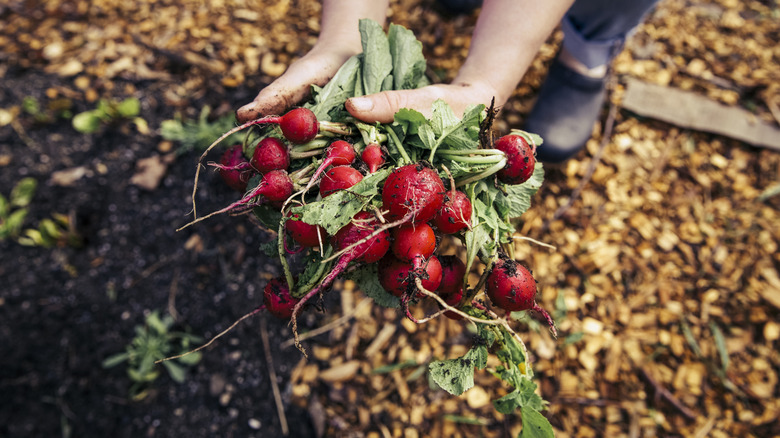The Difference Between Turnips And Radishes, And How To Use Them
It's not unusual for folks to confuse turnips and radishes, because they share a similar size and appearance. But these root vegetables have specific characteristics that set them apart.
If you like to be well-informed and you want to know the distinctions just because, or you're planning a dish and need to know which one to use, understanding the difference between turnips and radishes can help you choose the right ingredient for your recipe. Both belong to the Brassicaceae family (which also includes broccoli, cabbage, and arugula), but they differ in flavor, texture, and culinary applications.
Turnips are heartier and more versatile, so they give you a milder, slightly sweet taste that becomes more pronounced when cooked. Radishes have a peppery bite and crisp texture, so they're perfect for raw dishes like a salad.
Speaking for myself, learning more about these vegetables made me more inclined to try experimenting with them in the kitchen, as I noticed that they were excellent additions as a side dish to some of my favorite proteins, like pot roast. Here's what makes turnips and radishes unique, from their flavors to their best culinary uses.
Turnips are a versatile root for every meal
The turnip isn't a vegetable that I feel like you hear about all the time, like carrots, potatoes or broccoli. But it's a great veggie to have on hand, thanks to its adaptability and pleasant flavor. Turnips range in size from small, tender baby turnips to larger varieties that are a bit more robust.
If you eat them raw, the taste is somewhat sweet and faintly bitter. Cooking turnips transforms them into a creamy delight with a nuttier flavor. A few of my go-to moves are to roast them for a caramelized side dish, glaze them to sweetly update their bitterness, mash them as a low-carb alternative to potatoes, or cube them into stews for added texture.
Nutritionally, turnips are packed with vitamins C and K, as well as fiber, so they're a healthy addition to your diet. They're also available year-round, with peak season in the cooler months when their flavor is at its best. Though we're mostly talking about the root when talking about turnips, don't sleep on the greens! They're a little spicy and perfect when sautéed or added to soups.
Other ways I like to use turnips are fermented into pickles or incorporated into bread recipes for an earthy flavor. Turnips adapt to various cooking methods, and they offer a comforting yet nutritious option for almost any dish.
Radishes are crisp, peppery, and fresh
Radishes bring a completely different energy to the kitchen with their sharp, peppery flavor and refreshing crunch. They are smaller and more delicate than turnips, typically eaten raw, and most commonly used in salads (prepare to be enlightened by this radish salad with brown butter dressing) and slaws or as garnishes. And they come in lovely, vibrant hues, ranging from red to purple, white, and even black,which adds visual appeal to any dish.
The bold, spicy flavor of radishes mellows out a little when roasted or pickled. This versatility lets them shine in both raw and cooked preparations. They're great when you slice them thinly to top tacos, shred them into sandwiches for extra bite, or roast them with olive oil and herbs for a unique side dish. Their quick cooking time also makes them a convenient choice for weeknight meals.
From a nutritional standpoint, radishes are low in calories and high in antioxidants, vitamin C, and fiber. They grow well in and are especially popular in spring and summer when their crisp, refreshing qualities are most appreciated.
Radishes may not have the same versatility as turnips, but their distinct flavor and texture make them indispensable in raw applications. Radishes bring brightness and crunch to your plate, and that's always a welcomed addition.


